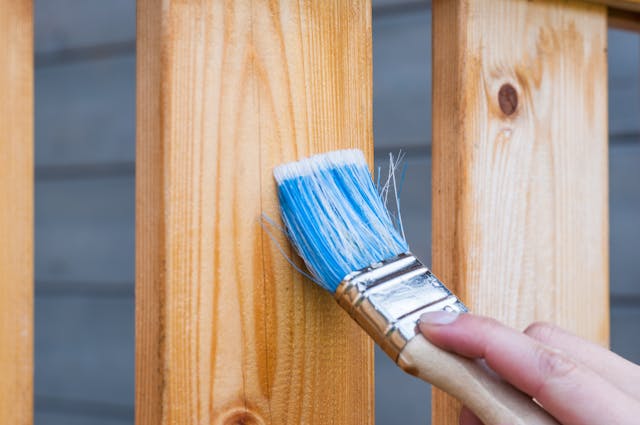
What does paint primer do? It helps paint stick to the surface, it helps the paint last longer, and it protects the material you are painting.
Humans have been using paint for tens of thousands of years. The earliest cave paintings were found in caves in Spain and they have been dated to 64,000 years ago. It is a red hand. Early cave paintings were made with charcoal, animal fat, the juice of berries, soil with lots of iron oxide, and many other pigments. They painted on their cave walls, but they didn’t paint their cave walls.
We can see designs like these inside the ancient Egyptian tombs and pyramids, but, again, they painted on the walls, they didn’t paint the walls. However, they did understand that the paint would stay on the wall if they treated it, and this is technically what a primer does. The ancient Egyptians plastered the wall before they painted because they knew the paint would stick to a plaster surface more easily than it would to a stone surface. Then they covered the painted wall in a protective resin which kept it safe from the elements and helped it last longer.
Most people couldn’t afford to paint their houses and would never even have thought about it. If they did, it was to protect the house against the weather or make them cooler. The Greeks painted their houses white using a paint that contained a large amount of lead. It kept the house cool, but may have been dangerous. In the Middle Ages, people who had money started to paint their houses to make them stand out. The first example of a guild of house painters is from the 1200s in England. However, it wasn’t until the Industrial Revolution and the urbanization that followed that paints became cheaper and more people could paint. Again, though, it wasn’t really until the early 20th century when enough people had enough money for house painting to become common.
So, what does a paint primer do? Its first job is to help paint stick to the surface being painted. Some surfaces are good for paint, but others are not. With some woods or porous surfaces like concrete, the paint soaks in and cannot be painted properly. The pores absorb the solvents that are in the paint, making it dry too fast. This is not good because it affects the chemical processes that take place in the paint while it dries. With other surfaces, such as some metals, the paint won’t stick to the surface and peels off very easily. A primer fixes those problems.
To make the paint stick to the surface, the primer has to have very high adhesive properties because it needs to stick to the paint and to the surface it is on. Primer is made of solvent, resin, and additive agents. There are two basic differences in primer depending on the surface. If the surface is very porous, like wood or concrete, then the resin in the primer will seal over the pores. This gives the paint a smooth surface to stick to and stops it getting absorbed into the material. It also protects whatever you are painting by making it waterproof and stopping the solvents in the paint being absorbed, which can damage the wood or the wall.
Primers for metal work in a slightly different way to those for wood or walls. Paint basically does not stick to metal. This is because the atoms in the metal are very reactive and they repel the atoms in the paint, stopping any bonds from forming. The primers for metal are basically what the egg in mayonnaise is for. The egg is an emulsifier and it gets the fat and the water to bond together. The fat is repelled by the water and vice versa. The egg is attracted to both the fat and the water, binding them together. Metal paint primers are designed chemically to be able to bond with both the atoms in the metal and the atoms in the paint. A lot of paint primers for metals also contain zinc. Metals that contain iron will rust when the iron is oxidized. Rust is harmful for any structure made of metal. The zinc in the primer will oxidize first, protecting the metal underneath. It is called sacrificial zinc and it can take years before all of the zinc is oxidized and the metal is affected. If the primer is reapplied, the metal will be protected. And this is what I learned today.
Photo by Pixabay: https://www.pexels.com/photo/person-holding-paintbrush-221027/
Sources
https://en.wikipedia.org/wiki/Cave_painting
https://ecospaints.net/a-brief-but-fascinating-history-of-house-paint
https://en.wikipedia.org/wiki/Primer_(paint)
https://www.clare.com/blogs/articles/do-you-need-paint-primer

[…] look nice. It is used to polish string instruments and pianos. It is sometimes used as a paint primer because it can block stains and smells. It has many other uses, too. It is used in some fireworks. […]